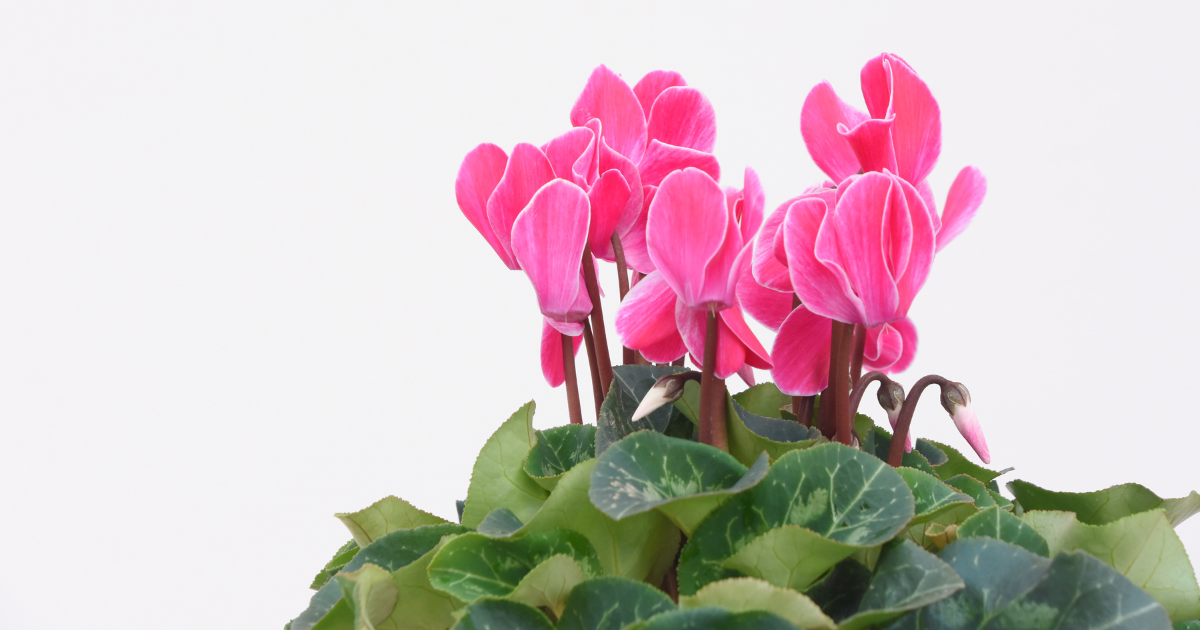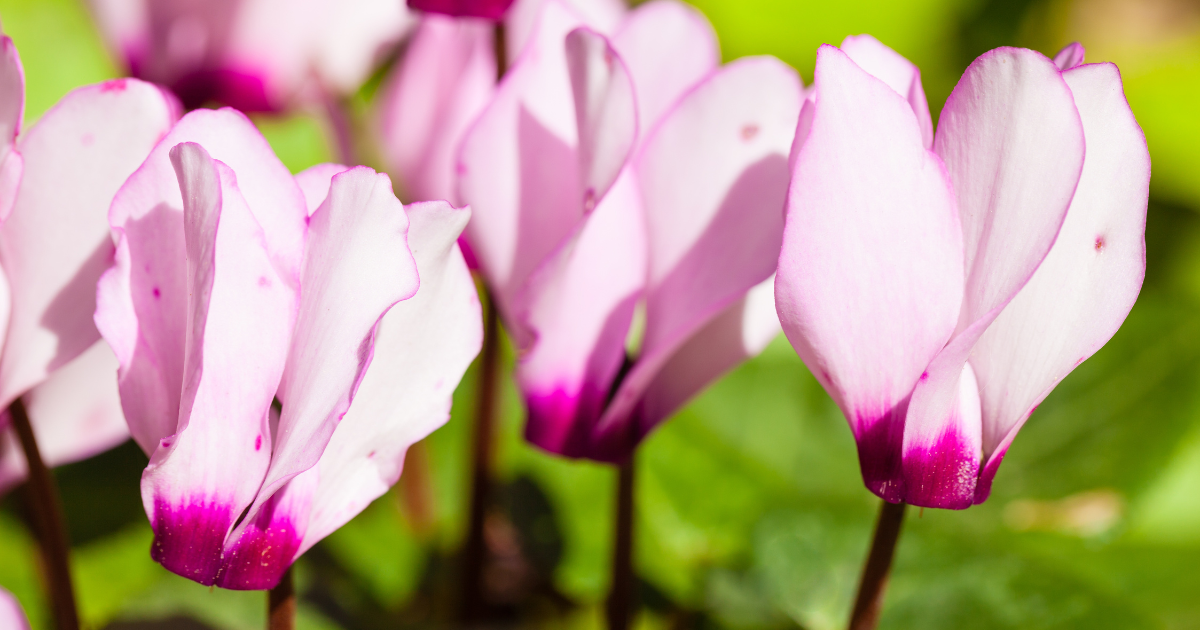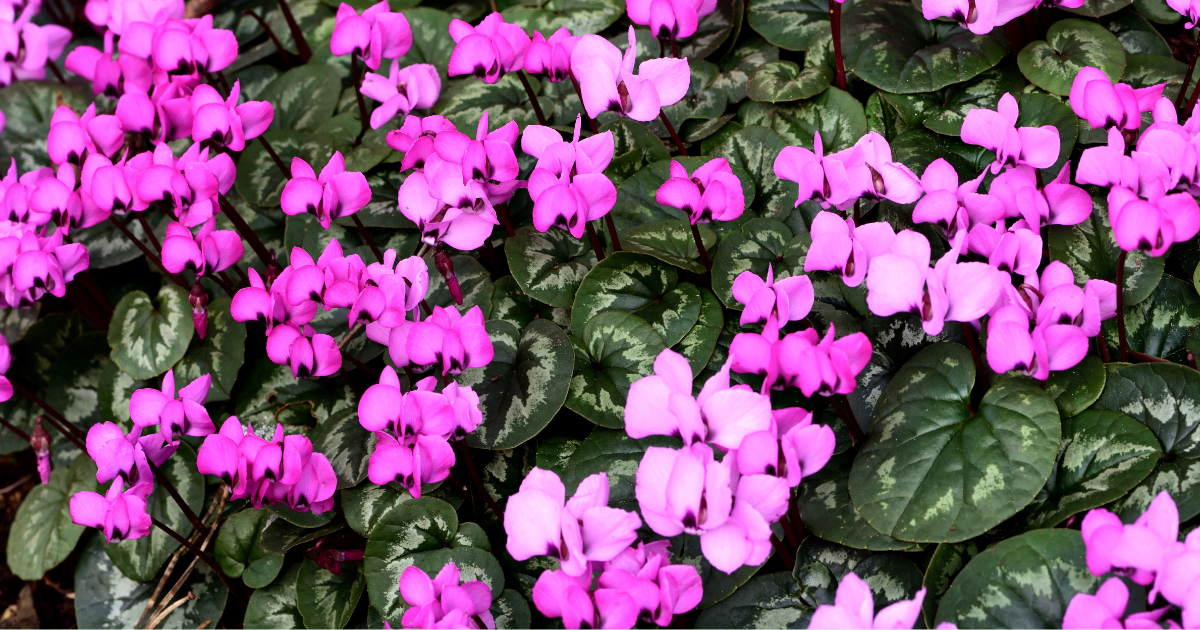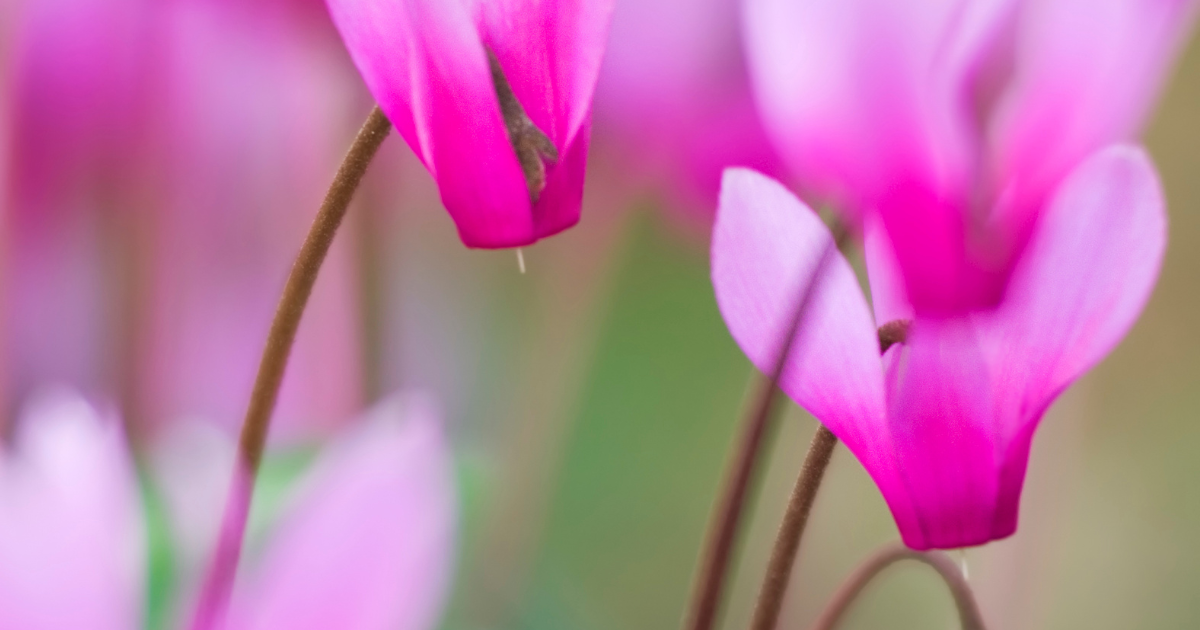What is a Cyclamen? A Beginner's Guide to This Enchanting Plant
Cyclamen, a plant that captivates with its beauty and mystique, has a rich history dating back to ancient Greek and Roman times. Known for its resilience and ability to bloom in the cooler months, cyclamen has charmed people across civilizations with its vibrant colors and unique flower shapes, often resembling butterfly wings or the delicate ears of a rabbit.
What is a Cyclamen?

A cyclamen is a flowering plant belonging to the family Primulaceae, known for its vibrant blooms and heart-shaped, variegated leaves that appear from winter to spring. Native to the Mediterranean region, Europe, and Iran, cyclamen thrive in cool, moist environments with well-drained soil.
Their flowers, which come in shades of pink, white, red, and purple, are distinctive for their upside-down appearance, with petals swept upwards. Cyclamens are popular both as indoor potted plants and outdoor garden plants in suitable climates, admired for their aesthetic appeal and the splash of color they bring during the colder months.
Caring for Cyclamen
Optimal Environment
Cyclamen plants flourish in cool, indoor environments that mimic their native Mediterranean habitats. They thrive under bright, indirect sunlight, which resembles the dappled sunlight filtering through forest canopies. To prevent leaf scorch, avoid placing cyclamen in direct sunlight, particularly during peak sun hours. Conversely, insufficient light may impede flowering, underscoring the importance of finding the perfect lighting balance for these enchanting plants.
Soil and Watering Needs
The ideal soil for cyclamen is well-draining and rich in organic matter, with a slight acidic to neutral pH. Incorporating perlite or sand can enhance drainage, crucial for preventing root rot. Cyclamen's watering needs are specific: the soil should remain moist but never waterlogged. During their active growth phase, allow the top inch of soil to dry before watering again. However, during their summer dormancy, reduce watering significantly to match the plant's reduced hydration needs without letting the soil dry out completely.
Temperature and Humidity

Cyclamen's preference for cooler temperatures, ideally between 60°F to 70°F during daytime and cooler at night, supports their vibrant blooming cycle. While they enjoy high humidity, they adapt well to average home humidity levels. To ensure their well-being, keep cyclamen away from direct heat sources or drafts that could disrupt their preferred temperature and humidity conditions.
Fertilization Strategy
Feeding cyclamen with a diluted, low-nitrogen liquid fertilizer every 4-6 weeks during the fall to spring growing season promotes healthy blooms without excessive leaf growth. It's crucial to water the plants thoroughly before applying fertilizer to prevent root tip burn. After acquiring a new cyclamen, delay fertilization for a few weeks to adjust to its new environment and avoid over-fertilization.
Propagation and Blooming
Though cyclamen can be challenging to propagate due to their tuberous roots and the hybrid nature of many commercial varieties, dividing the corm-like tuberous roots or attempting to grow from seeds are viable methods for those looking to expand their cyclamen collection. Remember, patience is key, as seeds may take up to two years to produce blooming plants.
Common Pests & Plant Diseases
Cyclamen can fall prey to several pests and diseases, but spider mites and botrytis (gray mold) are among the most common. Here's how to diagnose and resolve these issues:
Spider Mites: These tiny pests are hard to see with the naked eye but can cause significant damage. Signs include stippling on leaves, webbing, and a general dull look to the plant. To combat spider mites, increase humidity around your cyclamen, as mites thrive in dry conditions. You can also rinse the plant gently with water to dislodge the mites or use insecticidal soap as a safe treatment method.
Botrytis (Gray Mold): This fungal disease causes a fuzzy gray mold on leaves, stems, and flowers. It thrives in cool, wet conditions. To treat botrytis, remove affected parts of the plant immediately and improve air circulation around your cyclamen. Avoid overhead watering to keep the foliage dry, and consider using a fungicide if the infection is severe.
Preventive measures include ensuring good air circulation, avoiding overwatering, and keeping the area around your cyclamen clean to reduce the risk of disease.
Types of Cyclamen
Cyclamen species vary greatly, offering options for both indoor and outdoor gardening. Here are a few notable types:
Cyclamen Persicum

The most common indoor variety, known for its large, bright flowers in shades of pink, white, red, and violet. It's ideal for indoor cultivation due to its beautiful blooms and relatively easy care.
Cyclamen Hederifolium

Also known as the ivy-leaved cyclamen, this hardy variety is suited for outdoor gardens. It blooms in the fall with pink or white flowers and has marbled, heart-shaped leaves. It's one of the most robust cyclamen species, capable of surviving in cooler climates.
Cyclamen Coum

This species is known for its early spring blooms and can often be seen flowering even when snow is on the ground. It features small, rounded leaves and produces flowers in shades of pink, purple, and white, making it a charming addition to winter gardens.
Cyclamen Repandum

Known for its fragrant flowers and silver-marbled leaves, this species blooms in spring and prefers shaded areas. It's ideal for woodland gardens or shaded rockeries.
Each cyclamen species has its own unique charm and requirements, making it possible to find a suitable cyclamen for nearly any garden setting or indoor space. Whether you're drawn to the large, showy blooms of Cyclamen persicum or the hardy nature of Cyclamen hederifolium, there's a cyclamen to suit your gardening style and environment.
Meaning and Symbolism
Beyond its aesthetic appeal, cyclamen is imbued with deep symbolic meaning. Historically considered an aphrodisiac and a symbol of love and affection, cyclamen's petals and leaves have been used in various cultural rituals to signify sensuality, devotion, and emotional healing. The colors of cyclamen flowers add layers of meaning, with white symbolizing purity and innocence, pink denoting shy and introverted qualities, red expressing romantic affection, and purple representing diffidence and lost love.
Fern's Leafy Learnings
Resilience in Bloom: Cyclamen symbolizes the strength to overcome adversity, with its winter flowering serving as a reminder of hope and perseverance.
Expressions of Love: Gifting cyclamen can convey deep affection and devotion, with its various colors allowing for nuanced emotional expressions.
Careful Cultivation: Providing cyclamen with a cool environment, indirect light, and proper soil conditions is essential for their thriving.
Propagation Patience: While challenging, propagating cyclamen through seeds or tuber division can be rewarding, extending the life of your plant collection.
A Tapestry of Meaning: The cyclamen's rich symbolism and historical significance add depth to its beauty, making it a plant of both visual and cultural allure.
Deepen Your Roots with Flora
At Flora, we not only bring you a vibrant selection of locally sourced, rare, and delightful plants, but we also serve as your continuous guide in your plant parenting voyage, ensuring every leaf in your sanctuary thrives. With our Flora Pod™ technology and a nurturing community of over 250,000 plant lovers, we cultivate a space where every plant parent - novice or expert - can blossom.
We propagate with a commitment to sustainability, connection, and ceaseless growth, fostering a community where each member, and their plants, are cherished and nurtured.
Crave a lush, thriving green space? Adopt a plant from Flora today!
Flora Pod™ is featured on Shark Tank!
Top 10 Most Popular Roses
Mar 22, 2022
How to Care for China Roses
Mar 11, 2022
How to Care for Chinese Money Plants
May 15, 2020
How to Grow and Care for A Bird of Paradise
Apr 26, 2020
Top 10 Plants To Grow In A Terrarium
May 31, 2022
How to Grow and Care for Lucky Bamboo
Mar 29, 2022
How to Grow and Care for Corn Plants
Mar 29, 2022
How to Care for Madagascar Dragon Trees
Mar 21, 2022




